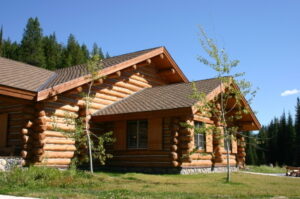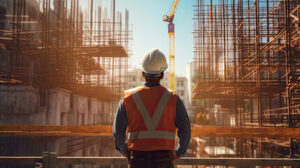Log Homes offers a rustic look with modern amenities like central air and heat, diverse layouts, and energy efficiency. However, there are a few things you should consider before investing. Logs shrink and shift over time, creating gaps in the chinking, which must be inspected and re-sealed regularly. Additionally, the wood must be treated to resist pests. For more information, visit this website at https://richardsonloghomes.com/.

- Aesthetics
If you’re looking for a cozy retreat, nothing is more inviting than the look and feel of a log cabin. From antler chandeliers to wildlife artwork, log cabin decor complements any style and can be found in many forms to create a stylish space that feels like home.
Whether you opt for an authentic log construction or a hybrid log and timber frame home, the natural aesthetic of wood is the most important factor in your final design choice. You can leave the logs exposed or cover them with drywall and other sidings, but no matter your final choice, a rustic, natural feel is key.
To achieve this, embrace natural materials and colors, utilizing various textures throughout your log home. For example, reclaimed hardwood flooring and table slabs, hand-carved wood wall art, and log staircases are just a few of the ways to incorporate the beauty of nature into your home. Earthy shades also fit well in log homes, ranging from lush greens to deep reds and golds of autumn leaves.
Using round logs in a log cabin makes it harder for fire to spread, reducing energy consumption by as much as 30% compared to traditional stick-built homes. This is a result of the fact that logs trap heat and release it slowly, preventing thermal leakage.
The rounded shape of the logs also allows you to easily hang pictures and other decorative items, even on curved walls. In addition, the lack of corners on log walls reduces maintenance time by minimizing dirt and dust accumulation. In addition, the logs’ rounded edges can be used for creative nooks and niches in your home, such as built-in shelving units or unique fireplace displays.
- Energy Efficiency
Log homes are popular for those who want to enjoy the natural comfort and timeless beauty of wood. However, they are also an energy-efficient construction option for those looking to reduce their carbon footprint. The thick walls of hand-crafted fir or spruce are incredibly effective at retaining heat and reducing heating bills. This is due to a process called thermal mass. This property allows the logs to absorb daytime warmth and slowly radiate that same heat into the home at night.
As a result, you may save money on your energy bills by adding less insulation than you would in a conventional building. This is especially true if you choose a log builder that uses modern, thermally efficient wood, such as white cedar.
The orientation of your log cabin can also significantly impact its performance in terms of energy efficiency. To take advantage of natural solar power, align your cabin’s long axis with the North-South line.
Another key consideration is the interior ceiling design of your log home. While a cathedral ceiling looks beautiful, it will require more energy to heat and cool because of its greater cubic volume than a tongue and groove flat ceiling. Consider an alternative, such as a vaulted ceiling, to save on your energy costs.
You can also make a big difference in the overall energy efficiency of your log home by using ENERGY STAR-certified doors. These doors are designed to insulate your home better than traditional hollow steel doors while complementing your log home’s rustic style.
- Ease of Maintenance
Log homes are built from natural materials that can resist mold, mildew, and fungus much better than traditional home construction. Using a low-VOC (volatile organic compounds) stain and maintaining proper indoor ventilation can help ensure your log home maintains its beautiful appearance over the years.
In addition to keeping your logs looking great, this maintenance also helps keep your home healthy and comfortable for you and your family. Logs provide excellent insulation, reducing winter and summer energy and cooling costs. This means that you will be able to spend more time enjoying the beauty of your log home rather than worrying about the cost of heating or cooling.
Another advantage of log homes is that they are easy to keep clean. Regular dusting with a soft cloth will remove dirt and cobwebs, which will help to keep your logs looking their best. Many log homeowners use cedar for their logs because it naturally produces preservatives, making it more resistant to rot and insects. This can save you the expense of regularly treating your logs with chemicals to avoid damage from pests and decay.
Log homes are also often constructed on a raised foundation, making inspecting the structure for potential issues easier. A walk around your house once a year can spot problems like loose logs or rotting before they become more serious. If you are worried about the required maintenance, some builders offer a yearly service plan for most routine maintenance.
- Flexibility
Log homes are highly customizable so that you can create your perfect retreat. Many log home producers offer a cache of tried-and-true designs, but most are happy to tweak a stock plan to meet your needs and design tastes. Alternatively, you can hire a private architect to create a custom design for your new log cabin. Your choice largely depends on your desires, time frame, and budget.
The solid structure of a log home also provides an effective insulator. The natural property of wood, called thermal mass, helps to keep the temperature inside your house comfortable in all seasons. It can even reduce energy costs by absorbing the sun’s warmth during the day and then radiating it back into the home at night.
Additionally, the sturdy nature of a log home means that it will withstand storms and other harsh weather conditions that might cause damage to conventional houses. This makes a log house a great option for those living in an area prone to natural disasters, such as hurricanes and tornadoes.
The sturdiness of a log home makes it more challenging to maintain. Many maintenance tasks are identical to those that homeowners should conduct on their regular homes, but some tasks require specific attention when working with a log structure. For example, all logs need to be seasoned, which averages seven years. When a log is put up without this process, it will shrink 5-10% in diameter, and windows or doorways that need more headspace to allow for this shrinkage can become bowed and unsteady. These issues can lead to major problems if they aren’t addressed properly.
- Value
Log homes are a popular choice for many homeowners, but they also present some unique challenges regarding valuation and lending. Since they represent a relatively small housing market segment, it can be difficult for appraisers and lenders to establish value and compare them with comparable properties.
Fortunately, these issues can be addressed by taking proactive steps to ensure your home maintains its value over the long term. Annual washing of the exterior walls with various detergents and thorough inspection of the chinking that forms a sealant between the logs will help prevent mold, mildew, and insect infestation. Additionally, having your logs re-stained at least every three years is a good idea to avoid sun damage.
As with any property investment, the success of your log home project will ultimately depend on how well you care for it and how wisely you choose to spend your money. Generally, any renovation that costs more than it returns in value will not be a smart investment. On the other hand, a few desirable features produce almost as much as they cost to implement.
One of the most attractive aspects of log homes is their energy efficiency. The logs act as natural insulation, absorbing the sun’s heat during the day and holding it until nightfall, when it slowly releases. This helps to keep the interior temperature stable, which reduces energy consumption and lowers utility bills. In addition, most modern log homes are available in kits that can be assembled on-site or pre-cut at the factory for delivery to the construction site.
